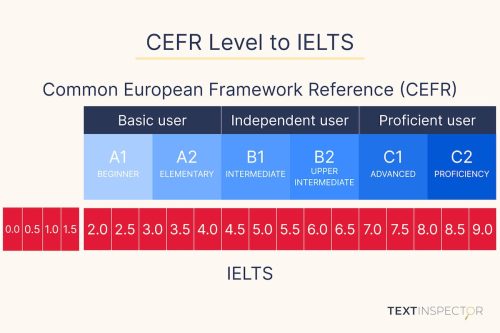Inclusivity in Teaching English: 4 Reasons Why It Matters & How to Improve It Instantly
25 September, 2023

An ideal ESL teaching scenario creates a space where everyone gets equal opportunities to learn and thrive, where students, regardless of where they’re from, feel like they belong, and where language education becomes a powerful tool to build competence and confidence among the leaders of tomorrow. This is precisely what inclusivity in teaching can do.
With this in mind, inclusivity in teaching English and inclusivity in language teaching more generally is acceptance, and means that students of diverse backgrounds and abilities can co-exist as we become an increasingly globalised and interconnected world. Similarly, inclusivity is also action.
As a teacher, letting students raised in different environments mix and interact with each other for group projects, creating a culture of openness and freedom to voice opinions and feedback in the classroom, or adjusting learning material based on an assessment of students’ current learning levels are a few examples of inclusivity in practice.
Challenges with Inclusivity in Language Teaching
Identifying some of the most common challenges English as a second-language (ESL) students encounter is the first step to developing an ESL-friendly teaching approach. While each classroom may have a unique set of challenges, understanding such problems can help prevent them from negatively impacting students’ learning.
1. English textbooks about un-relatable topics
While there are a variety of English textbooks available for teachers to choose from, they are often about topics that students can’t relate to, or that have been overused (like ‘how was your holiday?’) and so are poor for inclusivity in teaching. Topics which are not relatable for students often means that they are less engaged and disinterested in lessons. Of course, it is difficult to make a textbook which is relatable to all situations and contexts, so teachers often turn to creating their own materials, which can be costly and time-consuming (that’s where Text Inspector comes in!)

2. Low readability
Consider the following statement:
“Scientific writing is often belied as dry, stale; a block of indomitable, indecipherable text buttressed with vague language, passive voice, countless equations, and overly constructed, borderline-run-on sentences that seem to drag on and on and on.”[i]
The statement tries to convey a simple idea in a complex way making it difficult to understand. Academic textbooks often suffer from a similar problem – jargon-heavy words, never-ending sentences, and superfluous explanations that do little to enhance readability and clarity. Difficulty understanding reading instruction does not encourage inclusivity in teaching, meaning that lessons can be frustrating and ultimately may widen the gap between ESL and native English students’ learning in the classroom.
3. Traditional teaching methods
Many conventional teaching practices may reduce inclusivity in teaching. These include limiting coursework for English language learners to writing or reading, excessive focus on formal rules of grammar instead of developing a contextual understanding of language use, lack of conversational exercises, or strict adherence to an out-of-date syllabus.
A one-size-fits-all approach simply doesn’t work in favour of diverse classrooms and may leave such students feeling disinterested or irritated, which is counterintuitive when attempting to promote inclusivity in English teaching.

4. Cultural disconnect
In many cases, the curriculum may be developed based on the assumption that all students are familiar with the cultural context used in the syllabus. This neither helps ESL students relate to the language lessons, nor does it expose native English speakers to diverse perspectives.
For instance, in an American classroom, if language exercises primarily cater to only a specific segment of society, students from diverse groups may feel isolated or struggle to connect with the course content. Therefore, utilising a wide variety of material, specifically designed for your students is crucial in improving inclusivity in teaching.

The Demand for English Language Learning
With more than 1.5 billion learners worldwide, English continues to be one of the most studied languages owing to its popularity in higher education, employment, scientific research, and all other major industries and institutions.[ii] Moreover, the current refugee crisis, and job shortages in various parts of the world have also resulted in an influx of non-English speaking workforce in the UK and other countries. Adjusting to a new way of life requires learning a language like English that has particular national and global importance. It can also help with employment opportunities and smoother social integration.
While English education is in demand, its inaccessibility among certain diverse groups remains a problem. For instance, many top English textbooks used for teaching in the UK may not be readily available or affordable in other parts of the world. In addition to ESL teachers who want to make English texts more accessible for effective classroom learning, simplifying texts in English is also valuable to insurance companies, for legal purposes, or to build awareness about policy changes among people from diverse backgrounds.
Text Inspector: A Quicker Approach to Improve Inclusivity in Teaching English
Many language teachers are already aware of the need to review outdated textbooks and create more inclusive and interest-based learning materials for diverse groups of students. In fact, 80% of language teachers are trying to adapt textbooks to the needs of their students. This also includes sourcing their own texts from the immediate environment of students, in the form of newspaper articles, social media posts, computer games, job descriptions on company websites, etc., which are authentic and have practical significance for students.
While this approach may help improve learning outcomes for diverse groups, finding and creating suitable materials can be extremely time-consuming. One survey found that teachers spend an average of 44 minutes of preparation time for a typical one-hour lesson.[iii] Furthermore, COVID-19 increased the amount of time teachers spent creating online lessons and delivering lectures remotely, in addition to manually analysing text and adjusting learning materials for various students.
To help English-for-Speakers-of-Other-Languages (ESOL) professionals streamline the process of creating teaching material to match different learning styles, the Text Inspector tool can prove invaluable. Text Inspector allows teachers and assessors to instantly analyse the difficulty level of any text with detailed feedback so that it can be easily adapted to students’ learning needs at specific levels.
For example, if a teacher wants to design a lesson for young adults from different backgrounds looking for job opportunities in the future, the teacher can use Text Inspector to check the overall difficulty level of the text. So, if they’re considering extracts from real job descriptions or popular resume templates, screening the material through Text Inspector can help highlight potentially complex sections.

The teacher may decide to either adjust the difficulty level of these portions or add explanatory text to clarify technical terms. Pre-determining which sections require special attention, can also help them teach certain words in advance to ensure students don’t find it difficult to follow during the actual learning session. (For a more in-depth discussion of how to use Text Inspector to create authentic materials in teaching, see this blog.)
From assessing the overall Common European Framework of Reference for Languages (CEFR) level of your text to rating its readability, lexical richness, syllable count, and providing a range of other useful data instantly, you get all the information you need to adjust the text according to the unique needs of your classroom.
For instance, if the text you’ve chosen is appropriate for a B2 level, but your students are at an A2, Text Inspector will identify all areas of the text that need to be tweaked. The best part is that you can process your text over and over again using the tool to check the text’s difficulty level every time you adjust it before actually using it in the classroom.
Suitable for assessing text difficulty for diverse groups of learners, Text Inspector is not just a game-changer for the 11,400 ESOL teachers in the UK, but also has a global user base of subscribers from countries like China, India, and Brazil, where English language teaching has seen a massive growth in the past few years.
Text Inspector is a powerful tool that can help overcome the challenges of an outdated curriculum that doesn’t work for many English language learners. With comprehensive text analysis, Text Inspector becomes an asset for the modern teacher who hopes to empower and promote equal learning opportunities for students from diverse groups.
Want to ensure your teaching materials are more inclusive for ESL students but wish also to reduce time spent preparing them? Try Text Inspector for free, or sign up for a special subscription today!
References
[i] The Official PLOS Blog, 2016. The Importance of Storytelling in Science. PLOS Blogs. Available at: https://theplosblog.plos.org/2016/12/the-importance-of-storytelling-in-science/#comment-5510. Accessed July 26, 2022
[ii] Blanco, C., 2020. The 2020 Duolingo Language Report. Retrieved 31 July 2022, from https://blog.duolingo.com/global-language-report-2020/
[iii] While Lesson Planning Time has Surged Amid the Pandemic, Survey Reveals a Reverse Trend with the Off2Class Method for Teaching ESL, 2021. Retrieved 31 July 2022, from https://www.businesswire.com/news/home/20210603005354/en/While-Lesson-Planning-Time-has-Surged-Amid-the-Pandemic-Survey-Reveals-a-Reverse-Trend-with-the-Off2Class-Method-for-Teaching-ESL
Share
Related Posts

5 Things you should know about big data in NLP (Natural Language Processing)
15 September, 2023
In today’s digital world, data is a critical component of every aspect of our lives. From the personal data we generate as we go about our daily activities to the vast amounts of data that businesses collect, analyze, and use to drive decision-making, data has become an essential resource for individuals and organizations alike.
Read More ->
What Is The CEFR Level of Harry Potter? (Part 2)
19 May, 2025
In our previous article, we explored the CEFR levels of the first three Harry Potter […]
Read More ->
How to convert your CEFR Level to IELTS
20 February, 2024
The CEFR is one of the most commonly used measures of students’ foreign language abilities. However, there are several other tests and measures for English as a Second Language, including the IELTS. In this article, we will discuss how to convert your IELTS scores into CEFR levels, what each level means and how this can be useful for your exam preparation.
Read More ->